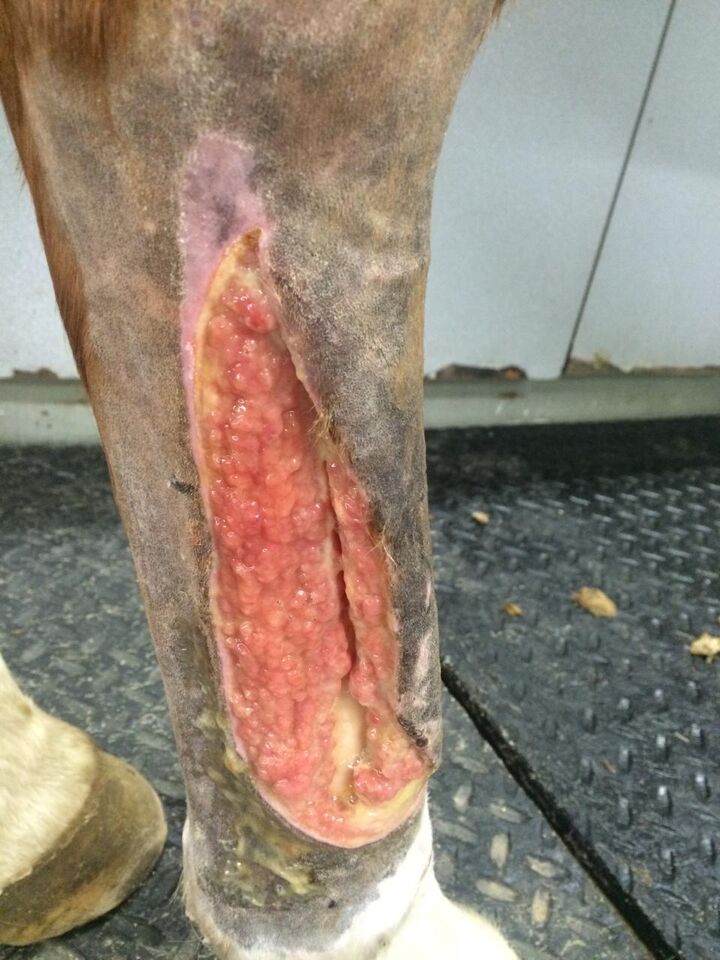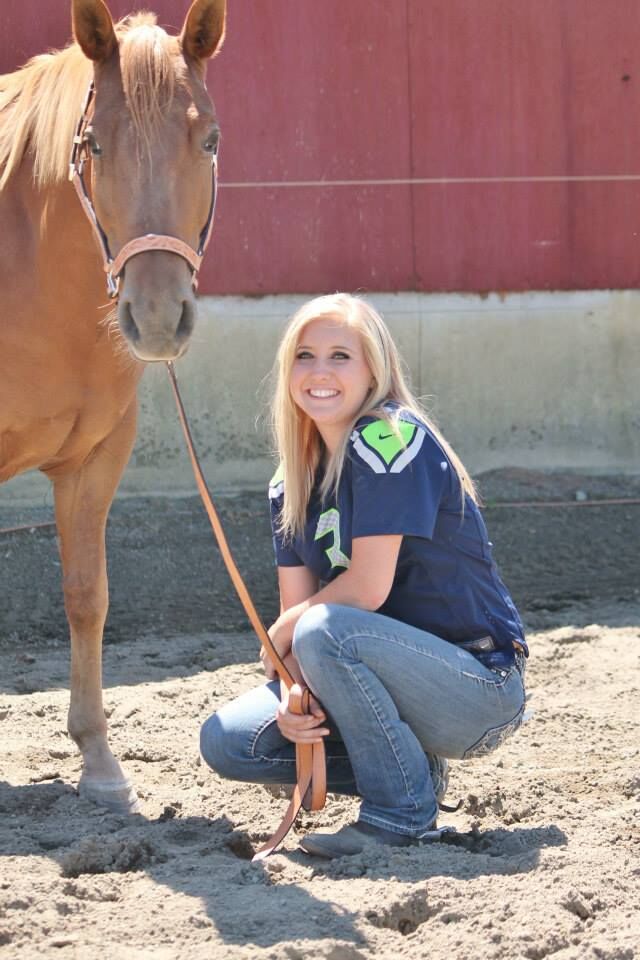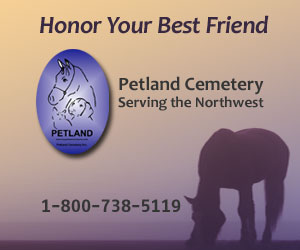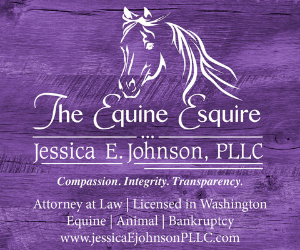One Quarter Horse’s Dramatic Injury and Recovery
by Dave Sauter, DVM
Photos Courtesy of Michelle Kornelis
On a Sunday morning in early January, it snowed for the first and only time last winter. Reba, a 7-year-old Quarter Horse mare, was excited by the new blanket of snow cover and was running on a hillside along the fence line. She slipped and had a serious collision with a T-post, resulting in a 45 degree bend in the post just above the metal flange. Corrina, Reba’s owner, had purchased her just a few months earlier with intentions of using her for reining and gaming. She was horrified when she arrived at the scene and saw a devastating wound on Reba’s right hind leg. She rushed the mare to the clinic, all the time worried that Reba would have to be put down.
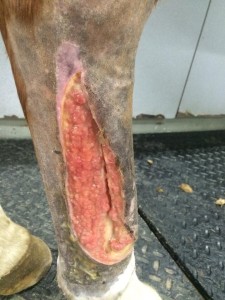
In her encounter with the T-post, somehow the flange ripped open the outside of the right hind cannon. The wound was deep, laying open most of the length of the cannon bone. It was also extremely wide; the tissues were very swollen and heavily contaminated with dirt, consequently, the wound could not be closed with sutures but would have to heal as an “open wound.”
The good news was some particularly vital structures, including the flexor tendons, tendon sheath, suspensory ligament and fetlock joints had been somehow spared. In addition, though very exposed the cannon bone was not fractured. However, the size, contamination and bone exposure of the wound posed potentially grave complications of bone infection, soft tissue infection, proud flesh, prolonged healing, awful scar formation, a permanently enlarged lower leg and other worries. One thing was certain: this was going to be a long process.
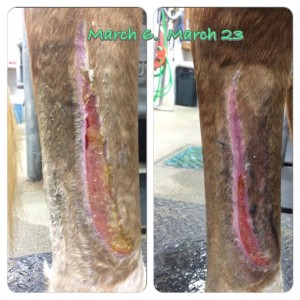 After encouragement from our small animal veterinarians who use laser therapy much more often, and confirmation from the laser manufacturer technical support on its safety over exposed bone, we decided to aggressively use laser therapy on Reba. Early response was so impressive we continued and over 3 ½ months Reba received 31 laser therapy sessions.
After encouragement from our small animal veterinarians who use laser therapy much more often, and confirmation from the laser manufacturer technical support on its safety over exposed bone, we decided to aggressively use laser therapy on Reba. Early response was so impressive we continued and over 3 ½ months Reba received 31 laser therapy sessions.
The first experimental application of laser energy for therapy was in 1967 by Dr. Endre Mester at the University of Hungary. From there, interest spread to Eastern Europe, the Soviet Union and China before eventually traveling to Western Europe and the United States. Laser therapy has positive biological effects on tissue, selectively affecting damaged cells, whereas higher energy lasers are damaging to both healthy and unhealthy cells. Low Level Laser Therapy (LLLT) affects tissues at the cellular level by stimulating damaged cell’s membranes and internal cell structures; it is not a heating, or photo-thermal effect. The benefits of laser therapy are not through a photo-thermal mechanism but, rather, an interaction between photons and photoreceptive structures within damaged cells, such as mitochondria. Here are examples of some of the positive effects of laser therapy:
- Relieves pain by stimulating the release of beta-endorphins, stabilizing nerve cells, relaxing muscle, and increasing the threshold for pain perception.
- Reduces inflammation promoting better circulation of blood and lymphatic flow and by inhibiting the production of inflammatory mediators.
- Speeds tissue repair and cell growth by increasing the energy level of the cell, increasing the rate of cell division, stimulating regenerative cells, stimulating nerve regeneration and scar tissue remodeling.
- Improves circulation within damaged tissue by stimulating the formation of new capillaries and by causing dilation of blood vessels.
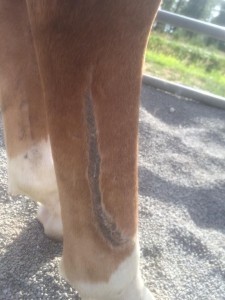 The healing properties of laser therapy and the deep efficient penetration possible with Class IV laser technology allow for many possibilities for application with the horse. Acute or chronic pain, joint problems such as arthritis, tendon or ligament injuries and wounds all can benefit. What was impressive about the results of laser with Reba’s injury compared to similar cases without laser include the following:
The healing properties of laser therapy and the deep efficient penetration possible with Class IV laser technology allow for many possibilities for application with the horse. Acute or chronic pain, joint problems such as arthritis, tendon or ligament injuries and wounds all can benefit. What was impressive about the results of laser with Reba’s injury compared to similar cases without laser include the following:
- The speed of granulation tissue growth (the connective tissue that first fills in the space of an open wound).
- The dramatic reduction in proud flesh that we normally see in such wounds.
- The impressive reduction in scar size and overall leg enlargement we see in such wounds.
There were other factors in the outcome:
- Because Reba came to the clinic so often for her laser treatments, we were able to make frequent adjustments in her treatment – what dressings to use, how often to change the bandage, when to surgically cut off proud flesh.
- She is young, strong and tolerated the prolonged confinement fairly well
Here’s the latest report from Corrina:
“Reba is now boarded at a barn and gets worked 3-4 times a week. Doing a lot of ground work to get more respect and to make her gain more ground manners, along with riding. We go on trail rides, road rides and she’s doing fantastic. Her injury has yet to restrict us from any thing we want to do. Our goal is to do reining in the NWRA and also get her patterned in all gaming events. The amount of love I have for this horse is incredible. I can’t wait to see where she goes from here.”
Published in September 2015 Issue
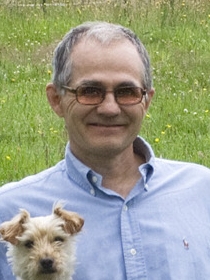
Dave Sauter is a Minnesota native and graduated from the University of Minnesota in 1987. Following graduation he interned at Rood and Riddle Equine Hospital in Lexington, Kentucky. After this internship, he continued to work exclusively with horses for another five years in Kentucky before moving out West and joining Kulshan Veterinary Hospital in Lynden, WA. He is a member of the AAEP, AVMA and the WSVMA. For more information about Kulshan Veterinary Hospital call 360-354-5095 or email [email protected]. www.KulshanVet.com


